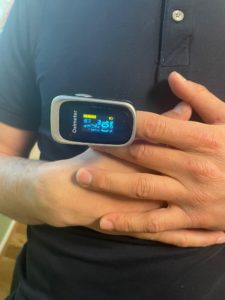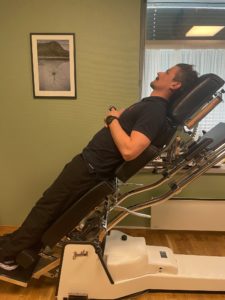POTS, or postural orthostatic tachycardia syndrome, is a condition that affects the autonomic nervous system in the body and can lead to symptoms such as difficulty changing position and discomfort in different parts of the body. This is due to disturbances in the autonomic nervous system, which can create problems with the regulation of blood flow, pupil contraction, digestion, heart rate, sleep and energy levels. POTS can affect many different systems in the body, causing physical, cognitive and psychological symptoms that can be bothersome or severe.
POTS is characterized by an abnormal increase in heart rate when changing position, usually without a drop in blood pressure. It is one of several types of dysautonomia. Research shows that POTS affects one to three million Americans, particularly women between the ages of 13 and 30. POTS has become more recognized in medical circles and among the general population in recent years, the reason for this is unknown.
There are several types of POTS, the main ones being adrenergic, low blood volume and neuropathic. Adrenergic POTS occurs due to an overactive response from the sympathetic nervous system in the body. Low blood volume POTS is caused by a decrease in blood volume preventing the autonomic system from functioning properly. Neuropathic POTS is caused by a lack of nerve supply.
How do you get POTS?
POTS is by definition not originally a disease, but is usually a condition that develops as a result of another disease. Studies show that POTS often occurs after concussions in young people, and one study showed that over 70% of people with concussions developed POTS. People with certain autoimmune conditions such as Sjögren's syndrome and celiac disease, as well as those with hereditary disorders such as Ehlers-Danlos syndrome, are at higher risk of developing POTS. Other causes linked to POTS include post-infection, head injuries, surgery and pregnancy.
What are the symptoms?
The symptoms of POTS can vary significantly from person to person, and there are no hard and fast rules about which symptoms will occur. This can make it difficult to diagnose and treat the condition. The more severe cases can be very limiting and prevent the person from performing daily activities.
Common symptoms of POTS include episodes of rapid or irregular heartbeat, inability to exercise, dizziness, anxiety, extreme fatigue, fainting or near-fainting, constant headaches, brain fog, blurred vision, shortness of breath, palpitations, shaking, chest pain or abdominal pain, nausea, sleep disturbances, cold and discolored hands and feet, difficulty adapting to temperature changes, and inability to concentrate.
This is not a complete list of symptoms that can occur in POTS, and it is believed that people with the condition may have several of the symptoms at the same time. The symptoms can also vary in intensity and occur in periods, which can make it challenging to know if progress is being made.
How can you test for POTS?
Tilt table test is the most reliable test for diagnosing POTS. This involves lying on an adjustable table that gradually raises the body to an upright position to mimic standing up in a controlled manner.
The diagnostic criteria for POTS include a minimum 20% increase in heart rate with a change of position or prolonged standing (between 5-30 minutes). Blood pressure may remain unchanged, but many studies show that many patients have a decrease (and in a few cases an increase) in blood pressure that accompanies the increase in heart rate.
In addition to the tilt table test, other tests may be useful in the diagnosis, such as QSART (measures the autonomic nervous system), an autonomic breathing test, a tuberculin skin test, a skin nerve biopsy, an echocardiogram or a study of blood volume hemodynamics.
How can POTS be treated?
According to the NEL (Norwegian Electronic Medical Handbook), a common medical approach for treating POTS is exercise and increased physical activity. Some medications have been tested, but there is a lack of documentation for long-term effects. Salt tablets, increased fluid intake, compression stockings are mentioned among others.
At Quantum Clinic, we take a holistic and functional approach to treating POTS. We use technology to identify areas of the brain that are weak or damaged and develop a plan to stimulate and improve these areas. We focus on healing the brain through neuroplasticity (the brain's ability to adapt), and also look at other factors such as sleep, diet and lifestyle that can help treat this condition.
I hope this article has provided you with useful information about POTS and our approach to treatment. If you would like to know more, or know someone who is struggling with POTS, please feel free to discuss this in more detail with us.
Research:
- "Postural orthostatic tachycardia syndrome: a review" by J. G. Fouad-Tarazi and J. A. Calcatti. This review article provides an overview of POTS, including its symptoms, diagnostic criteria, and treatment options (Autonomic Neuroscience: Basic and Clinical, 2004)
- "The pathophysiology of postural orthostatic tachycardia syndrome (POTS)" by Satish R. Raj. This review article discusses the underlying mechanisms that lead to POTS, including abnormalities in blood volume, autonomic nervous system dysfunction, and cardiovascular control (Clinical Science, 2014)
- "Prevalence and clinical correlates of postural tachycardia syndrome among patients with chronic fatigue syndrome" by A. T. White, et al. T. White, et al. This study found that a significant proportion of patients with chronic fatigue syndrome also have POTS, and that the presence of POTS is associated with more severe symptoms (American Journal of Medicine, 2010)
- "Treatment of postural tachycardia syndrome: a systematic review" by Satish R. Raj, et al. This systematic review evaluated the effectiveness of various treatments for POTS, including pharmacological interventions, physical maneuvers, and lifestyle modifications (Circulation: Arrhythmia and Electrophysiology, 2009)
- "Postural orthostatic tachycardia syndrome: clinical features, diagnosis, and management" by Blair P. Grubb. This article provides a comprehensive overview of POTS, including its clinical features, diagnostic criteria, and management strategies (Seminars in Neurology, 2013)
- NEL: https://legehandboka.no/handboken/kliniske-kapitler/nevrologi/tilstander-og-sykdommer/nevropatier/postural-takykardisyndrom-pots


